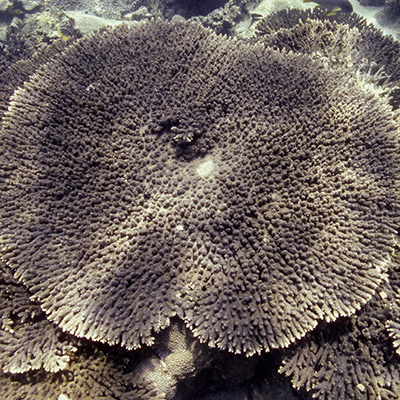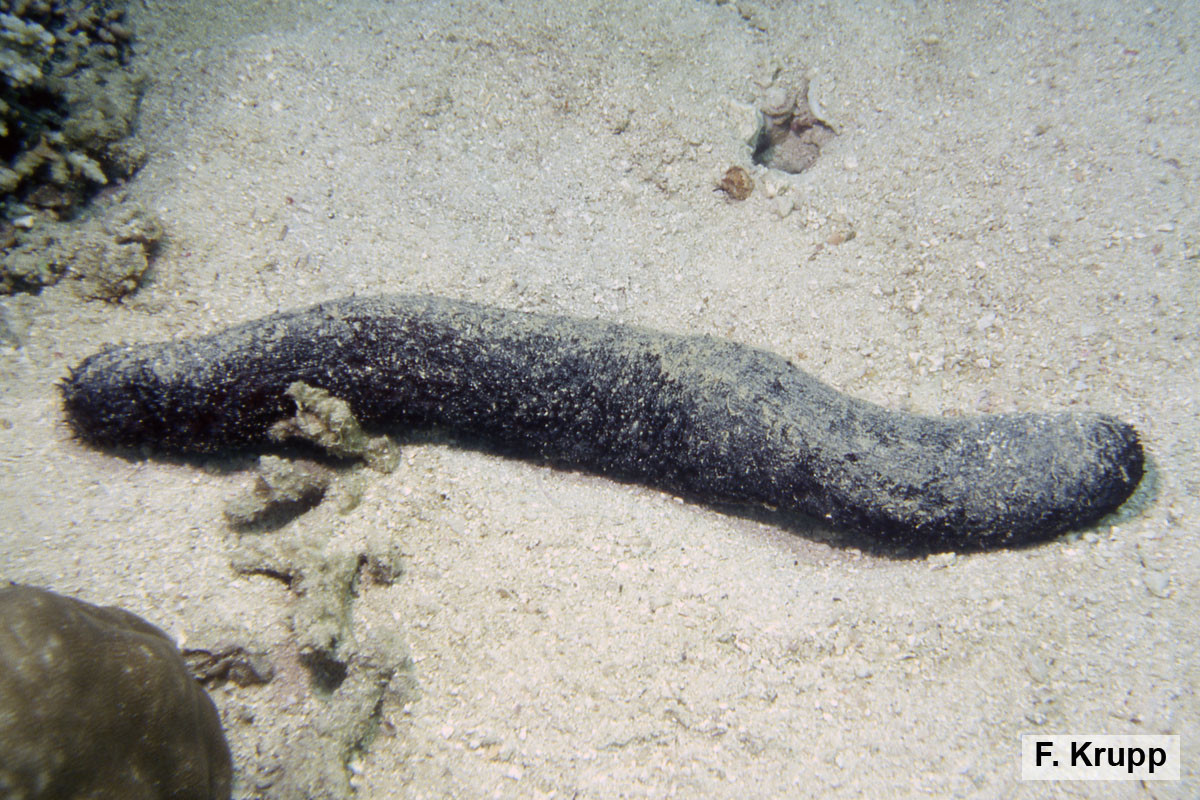Name: Holothuria atra
Common name: Black Sea Cucumber
Local name:
Scientific name: Holothuria atra
Classification: Class – sea cucumbers, Holothuroidea; order – Aspidochirotida; family – holothuriids, Holothuriidae
Synonym: The species may be misidentified as Holothuria leucospilota, which is very similar.
Size: Individuals of this species can grow to a length of 60 cm, but 20 cm is a more common size. The mean live weight is about 200 g and can reach up to 1 kg.
Habitat:
Specimens of this species are conspicuous and common, lying exposed on sand flats of sandy or sand-covered rocky areas, sea grass beds, and among corals at depths from near the surface to about 20 m. The Black Sea Cucumber, the most commonly encountered holothurian in Qatar, is an omnivore feeder, sifting through the sediment with its tentacles and feeding on detritus and other organic matter while at the same time ingesting sand grains. Shallow-water populations are denser and composed of smaller individuals, which reproduce mostly by transversal fission, while populations in deeper waters with larger and more scattered individuals reproduce sexually. Holothuria atra emits a toxic red fluid when its skin is rubbed or damaged, which is a defense against predators.
Distribution:
The Black Sea Cucumber is widespread in the tropical Indo-Pacific region, its range extending from East Africa, the Red Sea and the Arabian Gulf to Australia, on to Hawaii and the eastern Pacific.
Conservation status:
The IUCN Red List of Threatened Species classifies Holothuria atra as Least Concern (LC) in its global assessment. The species is fished in some parts of its range, but the processed product is of low commercial value. The species is also targeted for the aquarium trade.
Description:
The body is elongated and cylindrical with rounded ends and a smooth skin. The mouth is ventral and is surrounded by 20 black branched tentacles. The anus is terminal. The color is uniformly black and the body is often more or less completely covered by sand grains adhering to the skin.








